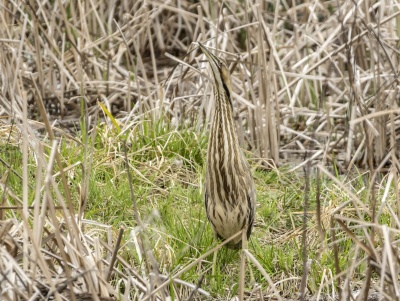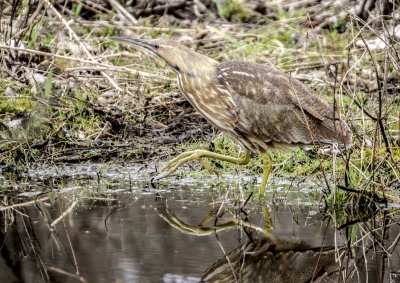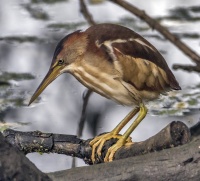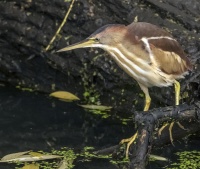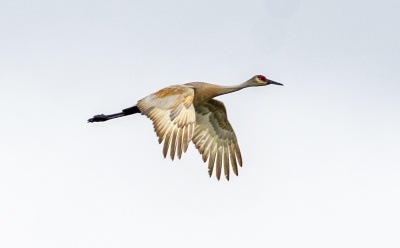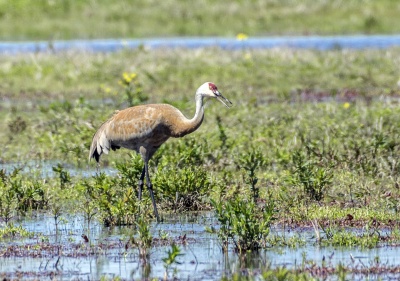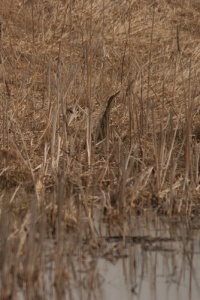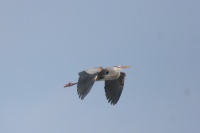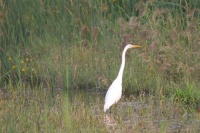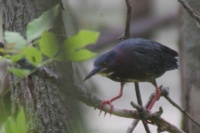Difference between revisions of "Near Shore Birds"
Ken Czworka (talk | contribs) (→Sandhill Crane) |
Ken Czworka (talk | contribs) (→Sandhill Crane) |
||
| Line 43: | Line 43: | ||
| − | [[File: | + | [[File:Sandhill1.jpg|400px|thumb|left|American Bittern (Botaurus lentiginosus) - © Ken Czworka]] |
| − | [[File: | + | [[File:Sandhill2.jpg|400px|thumb|center|American Bittern (Botaurus lentiginosus) - © Ken Czworka]] |
<br> | <br> | ||
Revision as of 17:52, 11 February 2022
|
|
Not an official term, local "edge-water birds" is here meant to categorize Bitterns, Cranes, Egrets, and Herons.
Contents
Bitterns
American Bittern
(Botaurus lentiginosus)
American Bitterns are medium-sized herons with thick, compact bodies. They have shorter legs and thicker necks than typical herons and a slightly hunched posture. The daggerlike bill is long, straight, and sharply pointed. The wings are broad but the wingtips are somewhat pointed. American Bitterns are mostly warm brown, buff, and white. They are strongly streaked, especially on the neck, and they can be very hard to see against marsh vegetation. In flight the dark outer wings contrast sharply with the brown of the rest of the bird. Bitterns are stealth predators and typically stand motionless as they wait for prey to approach, or stalk it with barely perceptible motions. They adopt a classic pose when alarmed, with the beak pointing straight up, helping this streaky bird blend in with its reedy background. They tend to forage alone. Look for American Bitterns in shallow freshwater marshes, typically toward the margins and among reeds and other vegetation; they are rarely out in the open.
Least Bittern
(Ixobrychus exilis)
This diminutive heron is fairly common in its preferred wetland habitat, but secretive and easily overlooked. Found in marshes with a mix of open water and vegetation, often with cattails, phragmites, or lily pads. Usually seen perched motionless, straddling reeds at the edge of water or on a short dash flying just above the reeds. Its soft song, "coo-coo-coo," is heard at night. Attractive pattern of orange, black, and white is distinctive among herons. Female drabber than male. Feeds on small fish.
Cranes
Sandhill Crane
(Grus canadensis)
Egrets
- Great Egret (Ardea alba)
- Cattle Egret (Bubulcus ibis)
Herons
- Great Blue Heron (Ardea herodias)
- Green Heron (Butorides virescens)
- Black-Crowned Night-Heron (Nycticorax nycticorax)
